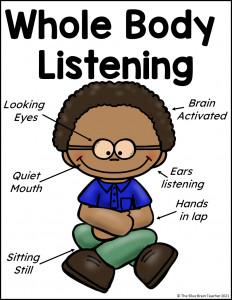In the quiet moments before a workout or at the close of a long day, stretching serves as a gentle whisper to our muscles, inviting them to unwind and release. Yet, in this delicate dance of flexibility, there lies a fine line between beneficial and detrimental. Stretching, when done correctly, can enhance our range of motion and prevent injuries. However, the risk of overstretching and strains lurks for those who push too far, too fast. This article explores the art of stretching safely, offering insights and techniques to ensure that your body reaps the rewards of this practice without falling prey to its potential pitfalls. Join us as we unravel the secrets to maintaining balance and harmony in your stretching routine, ensuring each movement is both purposeful and protective.
Understanding Your Limits the Art of Listening to Your Body
In the pursuit of flexibility, it’s crucial to recognize the subtle signals your body sends. Each stretch should be a dialogue, not a monologue. When you stretch, focus on your breath and the sensations in your muscles. If you feel sharp pain or discomfort, it’s a clear sign to ease back. Your body will often communicate through tension, so it’s essential to discern between the mild discomfort of a good stretch and the sharp pain that indicates potential harm.
Here are some tips to ensure you’re stretching safely:
- Warm up first: Always begin with a light warm-up to increase blood flow to your muscles, making them more pliable and less prone to injury.
- Listen to your body: Pay attention to how your body feels during each stretch. Adjust your position if you experience any discomfort.
- Progress gradually: Flexibility doesn’t happen overnight. Gently increase the intensity and duration of your stretches over time.
- Hold, don’t bounce: Use steady, sustained stretches rather than bouncing, which can lead to muscle strains.
- Breathe deeply: Use your breath to guide your stretches, inhaling to prepare and exhaling to relax deeper into the pose.

Mastering the Basics Essential Warm-Up Techniques for Safe Stretching
To prepare your body for effective and safe stretching, integrating a well-rounded warm-up routine is crucial. Dynamic movements are the cornerstone of any warm-up session, promoting blood flow and enhancing flexibility. Consider incorporating activities like light jogging, arm circles, and leg swings. These exercises gently increase your heart rate and prepare your muscles for more intense stretching, reducing the risk of injury.
- Gentle Joint Rotations: Focus on rotating your wrists, ankles, and shoulders to lubricate the joints and enhance mobility.
- Controlled Breathing: Pair your stretches with deep, rhythmic breaths to help relax muscles and increase the range of motion.
- Gradual Intensity: Start with low-intensity stretches and progressively increase the intensity to allow your muscles to adapt.
Incorporating these techniques into your warm-up routine can make a significant difference in your stretching sessions. By ensuring your body is adequately prepared, you pave the way for a safer and more effective flexibility training experience.
The Power of Progression Gradually Increasing Flexibility Without Injury
Embracing the journey of flexibility is not about how far you can stretch today but how you can progressively enhance your range over time without injury. The key lies in the concept of gradual progression, which emphasizes slow and steady improvement rather than aggressive stretching that can lead to overstretching and strains. By consistently incorporating flexibility exercises into your routine, your muscles and joints will adapt, becoming more pliable and resilient.
- Warm-up adequately: Begin with light cardio to increase blood flow to the muscles, preparing them for stretching.
- Incorporate dynamic stretches: Focus on controlled movements that mimic the activity you are about to perform, rather than static holds.
- Listen to your body: Pay attention to any discomfort and know when to ease off to prevent pushing past your limits.
- Use proper technique: Ensure that each stretch is performed with correct form to avoid unnecessary strain.
- Progress incrementally: Gradually increase the intensity and duration of stretches as your flexibility improves.
By following these strategies, you create a sustainable practice that not only enhances your flexibility but also fortifies your body against potential injuries. Remember, the true power of progression lies in respecting your body’s current capabilities while gently encouraging it to reach new heights.

Tools and Techniques Choosing the Right Equipment for Effective Stretching
When it comes to enhancing flexibility and preventing injuries, selecting the right equipment is paramount. Using tools like yoga straps and foam rollers can significantly improve the quality of your stretching routine. Yoga straps are ideal for those who are still working on their flexibility, as they help you reach positions without straining. Foam rollers, on the other hand, assist in releasing tension and improving blood circulation, offering a deeper stretch for your muscles.
- Yoga Mats: A good quality yoga mat provides a non-slip surface that ensures stability and comfort, allowing you to focus on your stretches without worrying about slipping.
- Resistance Bands: These versatile tools help in engaging different muscle groups and can be adjusted for various levels of resistance, making them suitable for all fitness levels.
- Massage Balls: Perfect for targeting specific muscle knots, massage balls can be used to apply pressure on tight areas, enhancing muscle recovery and flexibility.
Incorporating these tools into your routine not only aids in effective stretching but also encourages a balanced approach to flexibility, ensuring that your muscles are both challenged and cared for.
